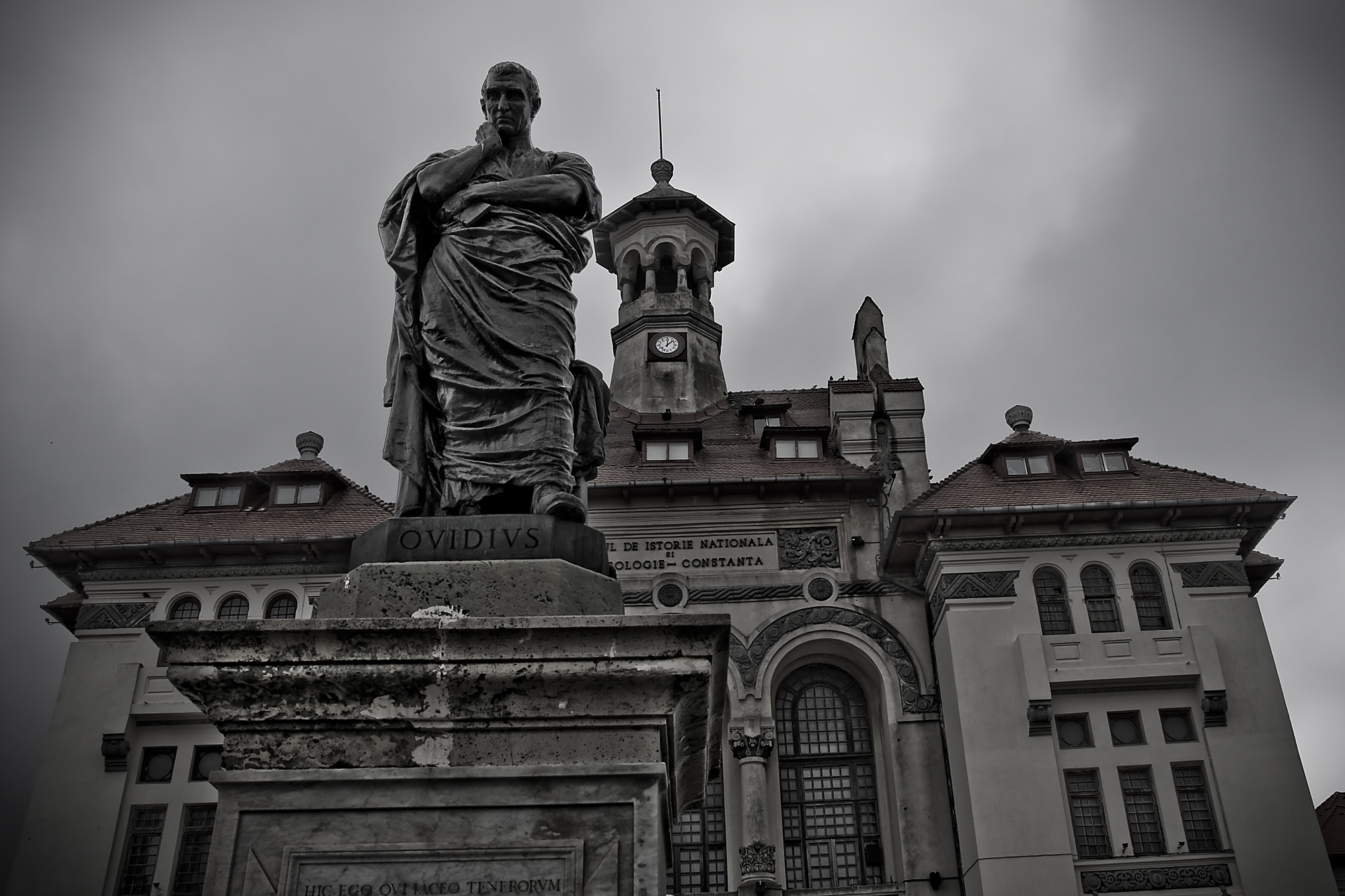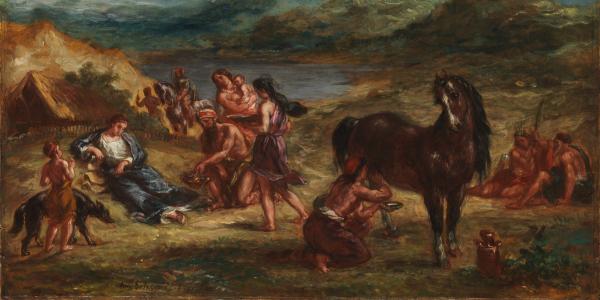An interview with Faculty Fellow Thomas Keeline
In the year 8 CE, Roman Emperor Augustus banished one of the most famous writers of his day, Ovid, to the outskirts of the empire in present-day Romania. Full of anger, self-pity and a sense of betrayal, Ovid recorded his suffering in a poem, Ibis — a caustic catalog of curses and swears cast at an anonymous adversary. Two thousand years later, the city of Rome reversed the ban, but Ovid never saw the city he loved again. Over the millennia, the curse poem, too, faded from the spotlight of scholarly attention. But with his project “Latin Textual Scholarship in the Digital Age: An Open-Access Critical Edition of Ovid’s Ibis and Its Scholia,” Faculty Fellow Thomas Keeline, assistant professor of classics, is reexamining the poem, this time employing some thoroughly modern methods.
What is a curse or invective poem?
A “curse poem” pretty much does what it says on the tin: it’s a poem that curses someone. And so Ovid’s Ibis is a 644-line series of imprecations directed at the man who drove him into exile. It’s not the only such poem that we have from classical antiquity, but it’s far and away the most extensive extant specimen. We actually know that Ovid’s Ibis is modeled on a Greek original of the same name by a poet named Callimachus — but unfortunately Callimachus’ poem hasn’t survived. We do have lots of nonliterary ancient curses; we are constantly finding lead curse tablets in graveyards and at the bottoms of wells and in all sorts of places.
Why did Augustus banish Ovid?
“A poem and a mistake” (carmen et error) is Ovid’s own explanation. The poem was the Ars amatoria (“The Art of Love”), a sort of ancient seduction manual that fell afoul of the Emperor Augustus. The error remains a mystery: possibly political, possibly sexual, but probably the world will never know. There is even a minority school of thought that believes Ovid’s exile is a literary fiction, although this seems extraordinarily improbable to me.

Why hasn’t Ibis received much scholarly attention? Why is it particularly fascinating to you?
Ovid’s poems from exile in general have been neglected in favor of his earlier love poetry and the Metamorphoses, his mythological masterpiece. But that’s not the whole story: In recent decades, much of Ovid’s exile poetry has come in from the cold, but the Ibis is still in exile. I think the biggest reason for this is that it’s an inaccessible poem in every sense: The unrelenting series of curses presupposes knowledge of recondite mythology and obscure ways of alluding to that mythology, and the poem lacks a modern edition and commentary to explain its recherché references. This is of course part of the draw for me: The Ibis’ erudition poses a formidable critical challenge — and that’s fun!
I also have an aesthetic appreciation for how Ovid does extraordinarily difficult things within the extraordinarily rigid constraints of Latin poetic meter in extraordinarily fluent language and verse. And, last but not least, I’m attracted to the poem because it was the first piece of Latin literature edited by A.E. Housman, English poet and Latin scholar extraordinaire. He’s one of the gods in my personal pantheon of classical scholarship.
Briefly, what does your project entail? What work have you already done to prepare for this project?
We don’t have Ovid’s original manuscript — we have only much later medieval copies of copies of copies. These texts were copied by hand, and in each new copy new errors were inevitably introduced. Over time these errors compounded, and as a result, no single manuscript preserves what Ovid actually wrote. My project entails reading through the extant manuscripts of the poem and figuring out their relationships, ultimately trying to work backward to Ovid’s original text.
I’m also editing the explanatory annotations that accompany the poem in the manuscripts. Some of these annotations preserve knowledge from antiquity, and all of them are evidence for how the poem was being read at particular times and places. These annotations (“scholia,” as classicists call them) have never been systematically edited. To prepare for this work I traveled to a number of European libraries and examined (and photographed) some 30 manuscripts of the poem.
What does a digital critical edition allow you to do that a book can’t?
Digital editions have lots of advantages, but I’ll just talk about one. In traditional print editions, readers have to read the text that the editor has chosen to print. But that “authoritative” text is always an editor’s reconstruction, drawing on different manuscripts and scholarly conjectures to try to fix a fluid tradition. My digital project lets readers play a role in the text’s constitution. I try to give readers all the information they’ll need to make their own informed choices about the text, and they’ll be able to have their choices reflected in what they’re actually reading. They can disagree with me if they want to. “Reading” a classical text becomes, in a way that it never could in the print world, what it always should be: a collaborative process of critical reconstruction.
Who is “Ibis,” the object of Ovid’s wrath?
Another one of those questions to which we’ll probably never know the answer, although that hasn’t stopped anyone from making guesses! Suggestions have included even the Emperor Augustus himself. But the most radical answer of all is Housman’s: “Who was Ibis? Nobody. He is much too good to be true . . . [He suffers] calamities too awful to be probable and too improbable to be awful.” But if Ovid’s curses are just an imaginative exercise in literary erudition, then we come very close to saying that Ovid’s exile too might be nothing more than an imaginative exercise. . . .
Headline image: Eugène Delacroix, Ovid among the Scythians, 1862, Oil on wood, Metropolitan Museum of Art





